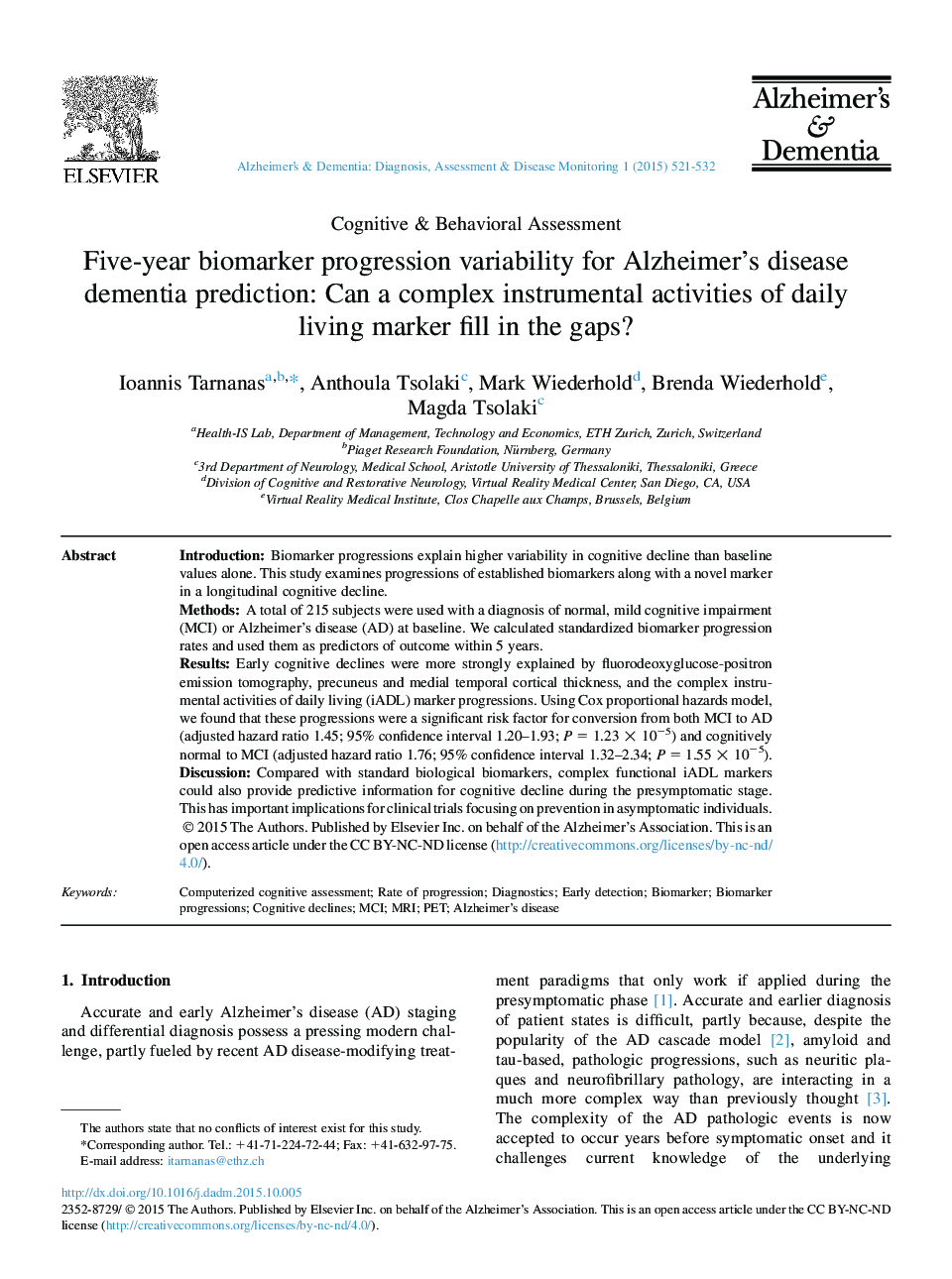| Article ID | Journal | Published Year | Pages | File Type |
|---|---|---|---|---|
| 3031993 | Alzheimer's & Dementia: Diagnosis, Assessment & Disease Monitoring | 2015 | 12 Pages |
IntroductionBiomarker progressions explain higher variability in cognitive decline than baseline values alone. This study examines progressions of established biomarkers along with a novel marker in a longitudinal cognitive decline.MethodsA total of 215 subjects were used with a diagnosis of normal, mild cognitive impairment (MCI) or Alzheimer's disease (AD) at baseline. We calculated standardized biomarker progression rates and used them as predictors of outcome within 5 years.ResultsEarly cognitive declines were more strongly explained by fluorodeoxyglucose-positron emission tomography, precuneus and medial temporal cortical thickness, and the complex instrumental activities of daily living (iADL) marker progressions. Using Cox proportional hazards model, we found that these progressions were a significant risk factor for conversion from both MCI to AD (adjusted hazard ratio 1.45; 95% confidence interval 1.20–1.93; P = 1.23 × 10−5) and cognitively normal to MCI (adjusted hazard ratio 1.76; 95% confidence interval 1.32–2.34; P = 1.55 × 10−5).DiscussionCompared with standard biological biomarkers, complex functional iADL markers could also provide predictive information for cognitive decline during the presymptomatic stage. This has important implications for clinical trials focusing on prevention in asymptomatic individuals.
